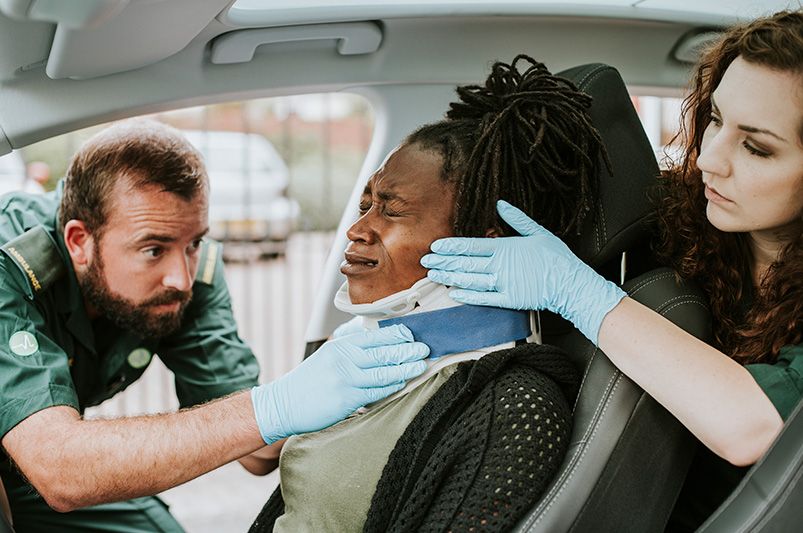Car Accidents in California: Lawyer vs. Insurance Companies | Protect Your Settlement
Published: 17/09/2025 | Updated: 17/09/2025
After a car accident, you’ll likely hear from an insurance adjuster fast—sometimes before you’ve even seen a doctor. Adjusters may sound helpful, but their job is to minimize the payout on behalf of the insurer. Your job is to protect your health, your time, and your financial recovery. A skilled California car accident lawyer balances the scales by valuing your case fairly, managing communications, and pushing back on low settlement offers that don’t account for the full impact of the crash.
Important: This article is informational only and not legal advice.
How the California Claims Process Typically Unfolds
A typical post-crash sequence looks like this:
-
Report & Claim Setup: Insurers open bodily injury and property damage claims; each gets a claim number.
-
Adjuster Outreach: You may be asked for a recorded statement, a broad medical authorization, and quick details about injuries.
-
Liability Review: The insurer evaluates police reports, photos, and statements.
-
Initial Offer: A first settlement number is often presented early—frequently before you’ve completed treatment.
-
Negotiation or Litigation: With representation, evidence is preserved, damages are fully documented, and negotiations (or a lawsuit) proceed from a position of strength.
Insurance Companies’ Incentives (and Tactics to Watch)
Insurers are not neutral. They aim to close files quickly and cheaply. Common tactics include:
-
Quick, low initial offers before your injuries are fully known.
-
Recorded statements designed to lock you into incomplete facts or speculative answers.
-
Comparative fault arguments to reduce your payout (“You were speeding,” “You weren’t watching,” etc.).
-
Broad medical record fishing to attribute injuries to pre-existing conditions.
-
Delay or deny strategy: Slow-walking claims to pressure you into accepting less.
Bottom line: Insurers manage risk for themselves—not for you.
How a Lawyer Flips the Script
A car accident lawyer protects your claim by:
-
Investigating liability: Gathering photos, videos, witness statements, vehicle data, and official reports.
-
Valuing the full picture of damages: Medical bills, wage loss, diminished earning capacity, future treatment, and pain and suffering—not just today’s bills.
-
Shielding you from adjuster tactics: Managing statements, deadlines, and authorizations so you don’t undermine your case.
-
Coordinating benefits: Navigating medical liens, med-pay, UM/UIM coverage, and property damage while your bodily injury claim proceeds.
-
Negotiating from evidence: Presenting records, physician notes, and impact statements to counter lowball offers.
-
Litigating when needed: Filing suit if negotiations stall, compelling a fair evaluation.
Real-World Scenarios Where Legal Help Changes Outcomes
-
Soft-tissue injuries undervalued: Adjusters may downplay whiplash or sprain/strain injuries. Attorneys connect the dots between diagnosis, treatment plan, and functional limits, preventing “it’s just soreness” narratives.
-
Disputed fault: When liability is contested, counsel can secure expert analysis (crash reconstruction, scene measurements) and neutral witnesses to clarify responsibility.
-
Multiple vehicles or commercial policies: Complex coverage layers and corporate risk teams need an advocate who understands limits, exclusions, and primary vs. excess coverage.
-
Rideshare or delivery crashes: Different policy triggers and notifications may apply; missing one can jeopardize benefits.
-
UM/UIM claims: If the at-fault driver is underinsured, your own uninsured/underinsured motorist policy can bridge the gap—if it’s pursued properly.
The Anatomy of Settlement Value (Beyond the First Offer)
Fair case evaluation accounts for:
-
Economic damages: ER visits, imaging, PT/chiro, prescriptions, medical devices, travel for care, wage loss, and property damage.
-
Non-economic damages: Pain, emotional distress, sleep issues, activity limits, and loss of enjoyment.
-
Future needs: Ongoing treatment, potential surgery, or therapy.
-
Impact evidence: How injuries affect work, caregiving, hobbies, and daily routines.
A lawyer compiles this into a demand package—with records, bills, narrative summaries, and supportive statements—to justify a higher settlement.
Evidence to Gather Early (and Keep Organized)
Stronger evidence = stronger negotiation leverage:
-
Photos & video: Vehicle damage, plate numbers, intersection/signs, skid marks, debris, weather, and visible injuries.
-
Reports: Police/incident report numbers; request copies when available.
-
Witnesses: Names, numbers, on-scene statements if safely obtained.
-
Medical records & bills: ER/urgent care notes, imaging reports, treatment plans, referrals, and receipts.
-
Work proof: Pay stubs, employer letters confirming missed shifts or modified duties.
-
Claim file: All adjuster emails/letters, recorded-statement requests, and claim numbers.
Keep a post-crash journal: symptoms, limitations, appointments, and out-of-pocket expenses. It’s invaluable when calculating damages.

How Lawyers Counter Low Settlement Offers—Step by Step
-
Audit the file: Identify gaps in proof that the insurer is relying on.
-
Fill the gaps: Order complete records, specialist notes, prognosis letters, and employer documentation.
-
Reframe liability: Supply clarifying evidence (scene diagrams, measurements, independent witness statements).
-
Quantify impact: Tie medical findings to functional loss (missed work, childcare needs, limitations in daily living).
-
Negotiate strategically: Present a well-supported demand with a reasoned value range, not a single number.
-
Escalate if needed: If the carrier won’t move, litigation timelines and discovery can prompt a reassessment.
When You Might DIY vs. When to Call Counsel
DIY may be reasonable when:
-
Property damage only and no injuries, or minor injuries with quick recovery and minimal treatment.
-
Liability is clear, and the only dispute is repair cost.
Call a lawyer promptly when:
-
You have moderate to serious injuries, extended treatment, or unclear prognosis.
-
Liability is disputed, multiple parties are involved, or a commercial/rideshare policy is in play.
-
You receive a quick low offer or pressure to sign a broad release.
-
You’re asked for recorded statements or blanket medical authorizations.
If you’ve been in a California car accident, you don’t have to take the first offer.
JusticeGuys connects you with experienced car accident attorneys who negotiate with insurers daily and know how to counter low settlements with evidence-driven demands.
Get matched with a lawyer who fits your case.
Find a Lawyer with JusticeGuys →
Downloadable PDF: Car Crash Claims Playbook (Insurance vs. Your Lawyer)
Keep this checklist handy to protect your case—from the first call to the final offer.
Download the Car Crash Claims Playbook PDF
FAQs
Q1: Do I have to give the insurance company a recorded statement?
A1: You can cooperate without providing a recorded statement right away. Consider speaking with a lawyer first so you don’t accidentally limit your claim.
Q2: Why was the insurer’s first offer so low?
A2: Early offers often come before your injuries are fully diagnosed or valued. A lawyer can document the complete picture—medical needs, time off work, and long-term impact—to negotiate higher.
Q3: What if I’m partially at fault?
A3: Fault can be allocated among drivers. An attorney can evaluate evidence, address disputed facts, and work to reduce any unfair fault percentage used to lower your payout.
Q4: How long should I wait to settle?
A4: Settling before you understand your treatment plan and prognosis risks under-compensation. Many people wait until maximum medical improvement or a physician can explain future needs.
Q5: Will hiring a lawyer mean I have to go to court?
A5: Not necessarily. Many claims settle through negotiation. But having counsel signals you’re prepared to litigate if needed, which can encourage fair offers.